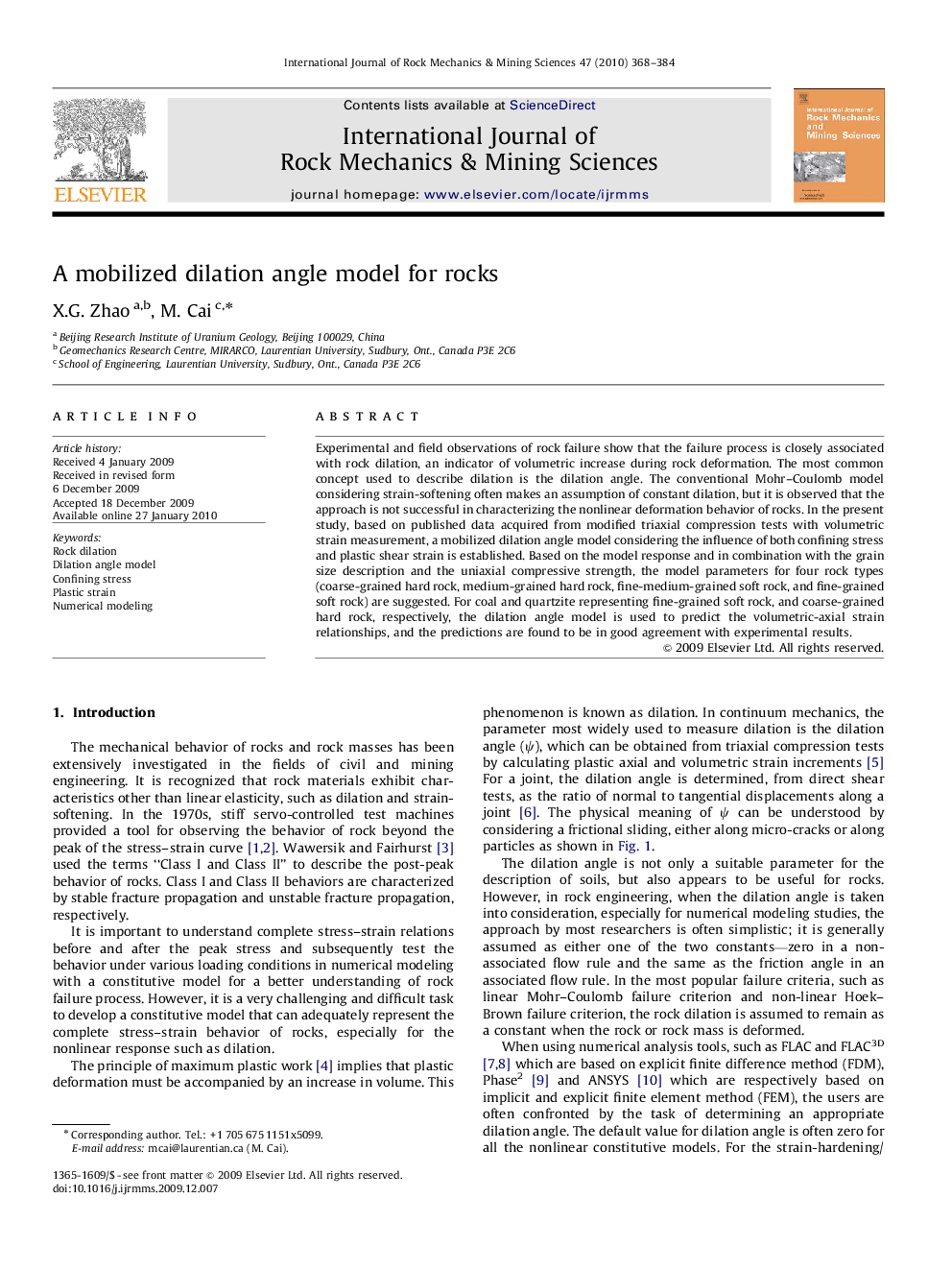| Article ID | Journal | Published Year | Pages | File Type |
|---|---|---|---|---|
| 809767 | International Journal of Rock Mechanics and Mining Sciences | 2010 | 17 Pages |
Experimental and field observations of rock failure show that the failure process is closely associated with rock dilation, an indicator of volumetric increase during rock deformation. The most common concept used to describe dilation is the dilation angle. The conventional Mohr–Coulomb model considering strain-softening often makes an assumption of constant dilation, but it is observed that the approach is not successful in characterizing the nonlinear deformation behavior of rocks. In the present study, based on published data acquired from modified triaxial compression tests with volumetric strain measurement, a mobilized dilation angle model considering the influence of both confining stress and plastic shear strain is established. Based on the model response and in combination with the grain size description and the uniaxial compressive strength, the model parameters for four rock types (coarse-grained hard rock, medium-grained hard rock, fine-medium-grained soft rock, and fine-grained soft rock) are suggested. For coal and quartzite representing fine-grained soft rock, and coarse-grained hard rock, respectively, the dilation angle model is used to predict the volumetric-axial strain relationships, and the predictions are found to be in good agreement with experimental results.
